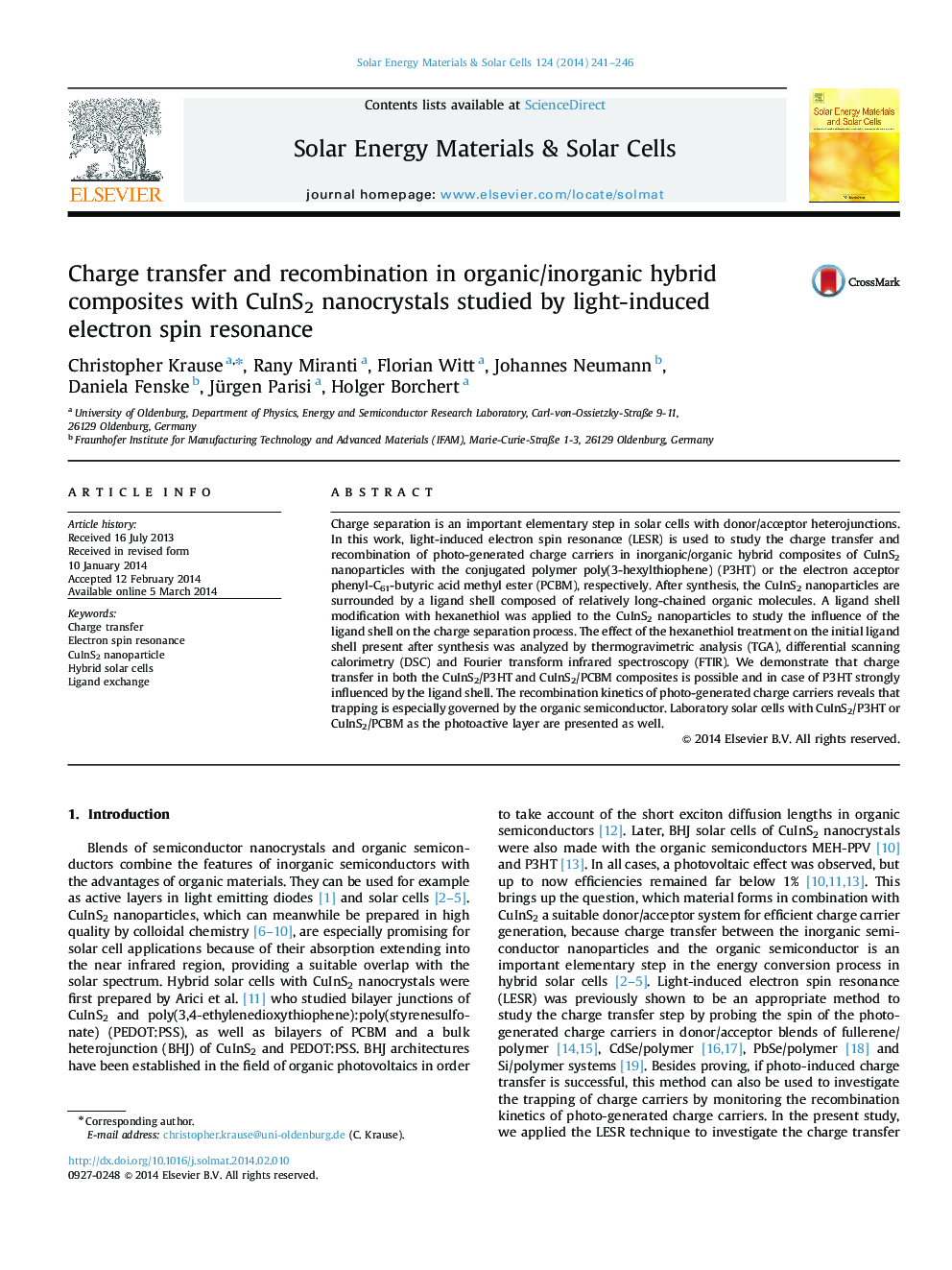| Article ID | Journal | Published Year | Pages | File Type |
|---|---|---|---|---|
| 6535775 | Solar Energy Materials and Solar Cells | 2014 | 6 Pages |
Abstract
Charge separation is an important elementary step in solar cells with donor/acceptor heterojunctions. In this work, light-induced electron spin resonance (LESR) is used to study the charge transfer and recombination of photo-generated charge carriers in inorganic/organic hybrid composites of CuInS2 nanoparticles with the conjugated polymer poly(3-hexylthiophene) (P3HT) or the electron acceptor phenyl-C61-butyric acid methyl ester (PCBM), respectively. After synthesis, the CuInS2 nanoparticles are surrounded by a ligand shell composed of relatively long-chained organic molecules. A ligand shell modification with hexanethiol was applied to the CuInS2 nanoparticles to study the influence of the ligand shell on the charge separation process. The effect of the hexanethiol treatment on the initial ligand shell present after synthesis was analyzed by thermogravimetric analysis (TGA), differential scanning calorimetry (DSC) and Fourier transform infrared spectroscopy (FTIR). We demonstrate that charge transfer in both the CuInS2/P3HT and CuInS2/PCBM composites is possible and in case of P3HT strongly influenced by the ligand shell. The recombination kinetics of photo-generated charge carriers reveals that trapping is especially governed by the organic semiconductor. Laboratory solar cells with CuInS2/P3HT or CuInS2/PCBM as the photoactive layer are presented as well.
Related Topics
Physical Sciences and Engineering
Chemical Engineering
Catalysis
Authors
Christopher Krause, Rany Miranti, Florian Witt, Johannes Neumann, Daniela Fenske, Jürgen Parisi, Holger Borchert,
